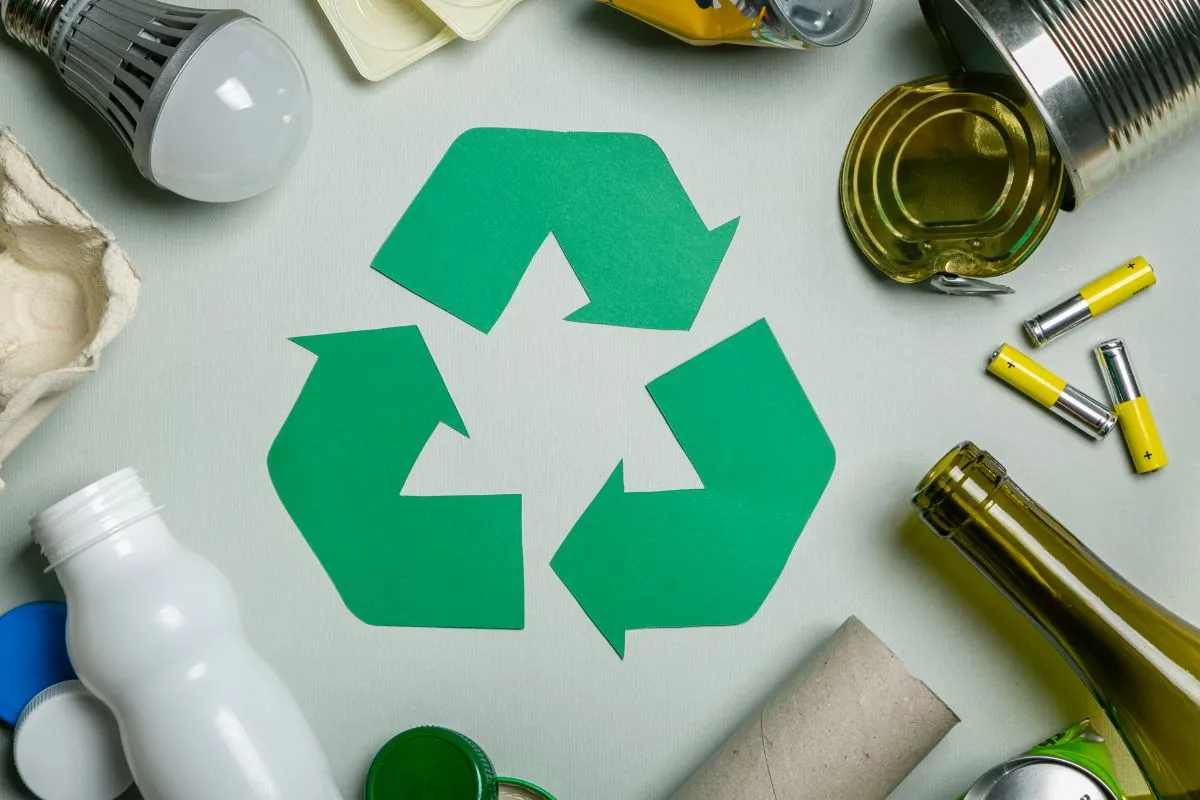Recycling Trends for 2024
Recycling plays a crucial role in modern sustainability efforts. As we approach 2024, recycling trends are rapidly evolving to address pressing environmental concerns.
This article explores the most relevant trends shaping the future of recycling and how consumers can actively participate in these initiatives.
By delving into emerging practices, technological innovations, and strategies to promote a circular economy, we aim to inspire and inform.
1. Increased Focus on Circular Economy
The circular economy is an innovative model that seeks to eliminate waste while promoting the continual use of resources. In 2024, we will see a significant rise in focus on this approach as consumers become more conscious of their purchasing decisions.
They are increasingly looking for products that are not only recyclable but also designed for reuse. Here are some practices gaining traction:
Design for Disassembly
Products are being designed in a way that allows their components to be easily separated and recycled. This approach reduces the complexity of recycling processes, making it easier to reclaim valuable materials.
- Example: Furniture companies are creating modular designs that allow consumers to replace only damaged parts rather than discarding the entire piece.
Reuse and Upcycling
Consumers are turning to creative solutions for extending the life of their belongings. Upcycling involves transforming used items into new products, reducing waste and fostering creativity.
- Example: Old glass jars can be transformed into decorative storage solutions or candle holders.
Benefits of a Circular Economy
| Benefits | Description |
|---|---|
| Waste Reduction | Minimizes the amount of waste sent to landfills. |
| Resource Efficiency | Encourages the sustainable use of materials. |
| Economic Opportunities | Creates jobs in recycling and product design sectors. |
2. Innovative Recycling Technologies
As we move into 2024, technology will continue to revolutionize recycling practices. Consumers should familiarize themselves with several innovations that enhance the efficiency and effectiveness of recycling:
Artificial Intelligence (AI)
AI is being utilized to improve the sorting of recyclable materials. Machine learning algorithms can analyze and classify materials more accurately than ever before, streamlining recycling processes.
- Impact on Recycling: With better sorting, recyclables can be processed more effectively, leading to higher recycling rates and less contamination.
Chemical Recycling
This innovative technology allows plastics that were previously deemed non-recyclable to be processed. Chemical recycling breaks down plastics into their original monomers, enabling the creation of new plastic products.
- Benefits: This method increases the range of materials that can be recycled, thus reducing plastic waste.
How AI Improves Recycling
| Technology | Impact |
|---|---|
| Sorting Automation | Increases recycling rates by efficiently sorting materials. |
| Data Analytics | Helps companies understand recycling patterns and improve processes. |
3. Consumer Engagement and Education
One of the most vital trends in 2024 is consumer engagement in recycling. With accessible information and educational platforms, consumers can become advocates for recycling within their communities. Here are some effective ways to engage:
Educational Programs
Schools and community organizations are promoting educational programs that highlight the importance of recycling. These programs aim to equip individuals with the knowledge needed to make informed recycling decisions.
- Interactive Learning: Workshops and hands-on activities help participants understand the recycling process and its benefits.
Recycling Apps
Digital tools are available to help consumers navigate recycling. Apps provide information on what materials are recyclable and where they can be disposed of correctly.
- User-Friendly Features: Many apps include location-based services that guide users to nearby recycling centers.
Community Engagement Strategies
| Strategy | Description |
|---|---|
| Local Workshops | Teach consumers about recycling best practices. |
| Social Media Campaigns | Raise awareness and encourage recycling behaviors. |
4. Policy Changes and Regulations
As we approach 2024, governments worldwide are implementing policies that encourage recycling and reduce waste. Regulations are becoming stricter, and consumers need to stay informed about these changes:
Single-Use Plastic Bans
Many cities are adopting bans on single-use plastics, such as plastic bags and straws. This movement aims to reduce plastic waste in landfills and oceans.
- Consumer Action: Understanding local regulations can empower consumers to make sustainable choices.
Tax Incentives for Recycling Programs
Governments are offering tax incentives for businesses that implement effective recycling programs. These initiatives not only benefit the environment but also create economic opportunities.
- Business Involvement: Companies that participate can enhance their brand reputation while contributing positively to their communities.
Impact of Policy Changes
| Policy | Impact |
|---|---|
| Plastic Ban | Reduces waste and encourages alternative materials. |
| Recycling Incentives | Promotes greater participation in recycling programs. |
5. The Rise of Sustainable Packaging
With increasing consumer awareness, companies are prioritizing sustainable packaging solutions. In 2024, we expect to see more brands adopting eco-friendly materials and practices:
Biodegradable and Compostable Packaging
Companies are shifting from traditional plastic packaging to biodegradable and compostable alternatives. These materials break down more easily in the environment, reducing the overall impact of packaging waste.
- Example: Brands are now using plant-based plastics and recycled materials for their packaging needs.
Minimalist Packaging Design
Many businesses are embracing minimalist packaging designs, using less material while still providing protection for their products. This trend not only reduces waste but also appeals to environmentally conscious consumers.
- Benefits: Less packaging means lower production costs and a smaller environmental footprint.
Sustainable Packaging Examples
| Type of Packaging | Description |
|---|---|
| Recyclable Materials | Materials that can be processed and reused in new products. |
| Plant-Based Plastics | Plastics derived from renewable resources. |
| Reusable Containers | Packaging designed for multiple uses. |
6. Increased Focus on E-Waste Recycling
As technology advances, electronic waste (e-waste) has become a significant concern. In 2024, we will see an increased focus on recycling electronic devices responsibly:
Importance of E-Waste Recycling
E-waste contains hazardous materials that can harm the environment if not disposed of properly. Recycling e-waste helps recover valuable metals and reduces pollution.
- Consumer Responsibility: Understanding how to recycle old electronics is essential for minimizing environmental impact.
E-Waste Collection Programs
Many communities are establishing e-waste collection programs to facilitate responsible disposal. These programs ensure that devices are recycled safely and efficiently.
- Example: Local drop-off events for old electronics can help residents recycle their devices without hassle.
E-Waste Recycling Statistics
| Statistic | Description |
|---|---|
| Recycled E-Waste | Less than 20% of global e-waste is currently recycled. |
| Projected Growth | E-waste is expected to grow by 21% by 2030. |
7. The Role of Corporate Social Responsibility (CSR)
In 2024, companies will increasingly recognize the importance of corporate social responsibility (CSR) in their operations. Consumers are more likely to support brands that demonstrate a commitment to sustainability:
Sustainable Practices in Business
Businesses are adopting sustainable practices that align with recycling trends. This includes reducing waste in their operations and sourcing materials responsibly.
- Consumer Expectations: Shoppers are becoming more discerning and are likely to choose brands that prioritize eco-friendly practices.
Transparency and Reporting
Many companies are becoming transparent about their sustainability efforts, providing detailed reports on their recycling initiatives and waste reduction strategies.
- Impact on Brand Loyalty: Transparency fosters trust and encourages consumer loyalty.
Examples of Effective CSR
| Company | Sustainability Initiative |
|---|---|
| Unilever | Committed to reducing plastic waste by using 100% recyclable packaging. |
| Patagonia | Donates a percentage of profits to environmental causes. |
8. Global Collaboration on Recycling Efforts
As recycling challenges grow, so does the need for global collaboration. In 2024, we will see increased partnerships between governments, NGOs, and the private sector:
International Agreements
Countries are entering into agreements to address global waste management issues. These partnerships facilitate knowledge sharing and the implementation of best practices.
- Example: The Basel Convention aims to reduce the movement of hazardous waste between countries.
Community Initiatives
Local communities are banding together to launch recycling initiatives that address specific local needs. This grassroots approach can lead to more effective recycling solutions.
- Impact on Engagement: When communities come together, they can create a sense of ownership and responsibility toward recycling efforts.
Collaborative Recycling Models
| Model | Description |
|---|---|
| Public-Private Partnerships | Collaborations that leverage resources for better recycling infrastructure. |
| NGO Collaborations | Non-profit organizations working with communities to enhance recycling awareness. |
Conclusion
As we approach 2024, recycling is becoming more critical than ever. With a growing focus on the circular economy, innovative technologies, consumer engagement, and policy changes, there is significant potential to enhance our recycling practices.
As consumers, we hold the power to influence these trends and make choices that benefit our planet. By actively participating and educating ourselves about recycling, we can contribute to a more sustainable and healthy future.





